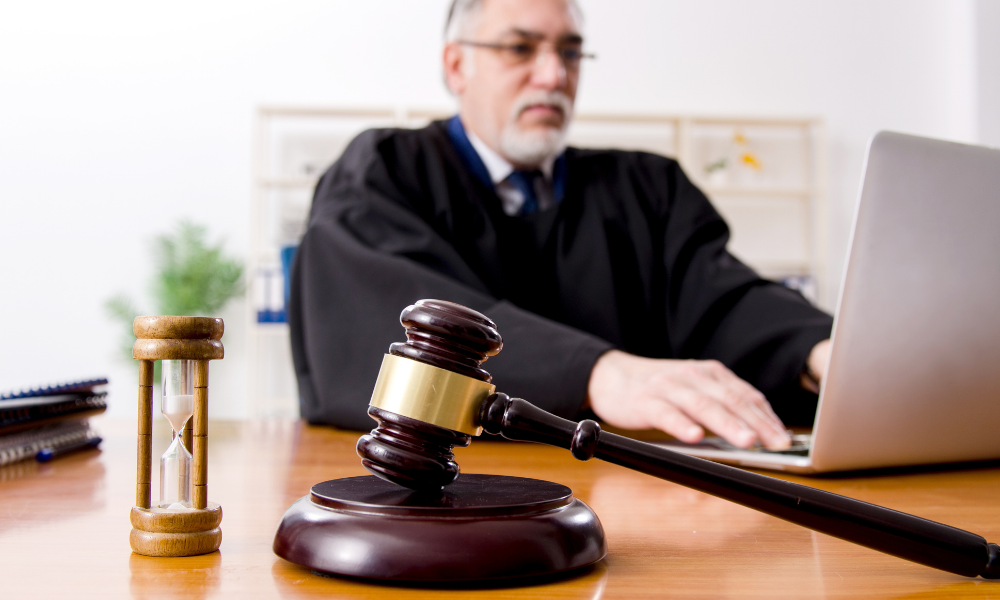Over a year and a half into the pandemic, we have seen a lot of change in courthouses and the operations of the components that comprise the judicial system. As we begin to emerge from the pandemic, I have been asking myself which of these changes are temporary and which are potentially here to stay. I will examine this question below and provide recommendations for courts based on our experience in performing planning and needs assessments in 19 federal, state, and county courthouses since the beginning of 2020.
Courts Want to Go Back to Normal
Based on our experience, most courts want to go back to normal without the sweeping changes that have been forced upon them during the pandemic. Generally, court components would like roughly 80% of their business to return to normal and perhaps 20% of their operations to remain flexible and mobile. Compared to many commercial and government offices that are changing 50% or more of their operations, courts are generally more conservative.
The overall feeling is that courts are a public institution and work well when people come together in the pursuit of justice. Technology masks the humanness of the process and provides access barriers to some participants. Courts were willing to keep the wheels of justice moving during the pandemic via virtual proceedings but this should not be a permanent solution for most proceedings moving forward.
Court Proceedings
Most courts paused as many courtroom proceedings as possible during the pandemic. This situation has caused delays in filings and created backlogs that could take courts two to three years after the pandemic to work through.
To adapt to the pandemic, many courts turned toward teleconferencing and videoconferencing for proceedings that could not be delayed. In some cases, full criminal trials were held over videoconference.
Moving forward, the majority of courts want most proceedings, especially trials, to occur in person. However, many courts would also like to continue videoconferencing for initial appearances, calendaring, and other quick proceedings. These observations fall in line with a recent report on Virtual Justice? A National Study Analyzing the Transition to Remote Criminal Courts by the Stanford Criminal Justice Center.
We recommend that every courtroom and judge’s chambers should have the ability to perform videoconferencing. This arrangement provides the greatest flexibility for both in-person and remote proceedings – or a mix of live and virtual participants.
Online Services
When the pandemic hit, many courts invested in technology to move services online. This push in technology has allowed people who cannot come to the courthouse to access court information and services.
The process of implementing electronic filing, electronic payments, and websites that provide online access to information and forms was already in motion for many courts prior to the pandemic. Many courts had already made the investment to implement some of these measures before COVID-19 but decided to further expand these services during the pandemic.
We believe that continuing this process is vital to future court operations. The pandemic helped to push the courts in the direction that many other government and commercial organizations have pursued for years. If there is a silver-lining to the pandemic, it could be the technology modernization of courts.
Electronic filing is a convenience to the public and attorneys, but also reduces paper and storage needs. It can also be combined with scanning and imaging to further reduce storage. Eliminating paper is promoted to keep public counters and work surfaces clear so that they can be cleaned effectively.
Online payments are a substantial convenience to the public, enabling them to pay court fees and fines without ever stepping into the courthouse.
Perhaps the greatest change will come from providing online access to information including court services, forms, and court proceeding schedules. Enabling online services is a key way of implementing a more user-friendly and open court.
Our recommendation is to modernize court technology systems, and continue to expand online services.
Remote Work
A third area we will examine is remote work. The pandemic has forced court personnel to work remotely and has required expanding information technology systems, purchasing laptops and other equipment, and providing support. Most courts report that the initial stages were rocky but remote work quickly smoothed out and eventually became successful.
During the pandemic, my company has performed many court planning sessions via videoconference. I have spoken to judges working from home in T-shirts and sweatpants and even one taking the meeting from a rocking chair on his front porch - a definite change from more formal meetings at the courthouse! Many judges, staff, and court employees seemed to adapt to remote work. Videoconferences still had barking dogs, intruding family members, and other interruptions, but business continued.
For the most part, court personnel have viewed remote work positively. Remote work helps court employees blend work and home life, and provides quiet, focused time for those with a productive home office set up.
However, many personnel are nervously waiting for court leadership to decide whether remote work will continue in the future. My sense is that there is a desire to continue remote work, but the fear is that court leadership will not support this moving forward. It has been especially rewarding to participate in courthouse planning calls and to have leadership indicate that they are in favor of continued remote work. Sometimes courthouse planning can be a catalyst for such decisions.
Our recommendation is for courts to continue to allow remote work for employees that wish to do so and for staff whose duties are amenable to it on a routine basis. While industry is discussing having personnel come work remotely two or three days per week, the courts we have spoken with have discussed allowing remote work one or two days per week. Teleworking one or more days per week provides for continued mobility, flexibility, and work-life balance. These are all important factors to retaining personnel and attracting new employees.
Going All In
This article has focused on what we are hearing from the majority of courts that we have worked with since the start of the pandemic in 2020. However, there are some courts that are truly embracing the changes sparked by the pandemic and are continuing more aggressive videoconferencing and remote work strategies. Here is what a more aggressive approach could look like:
- Court Proceedings – even courts that are promoting more aggressive change still contend that contested proceedings should still be held in person. However, in larger courts, where all judges are actively using videoconferencing for appropriate proceedings, videoconference hearing rooms have been constructed. These are smaller spaces with the trappings of a courtroom and are set up solely for videoconference proceedings.
The benefit of the hearing room is that it is always set up and optimized for videoconferencing. Judges do not have to use their chambers or a full courtroom to conduct proceedings. This is especially helpful if courtrooms are shared in a courthouse. - Online Services –it is costly and time-consuming to upgrade websites, implement electronic filing and case management, and enable online payments. However, once this investment is made, it has streamlined many court processes.
In some cases, it has worked so well that court units are providing additional waiting area space to add screens and kiosks for patrons to access online systems directly from the waiting area. Such patrons may not have access to computer systems elsewhere, but appreciate the ability to access court systems online.
- Remote Work - some courts have truly embraced remote work to the point that they are promoting workstation sharing, hoteling, and more collaborative spaces in the workplace. Such courts are having employees work remotely an average of two to three days per week and are saving on the amount of office space needed, either by reducing space or by having more staff work from existing space.
Some court units have reduced their space by 40% or more by embracing hybrid office concepts, which enable employees to split their time between working from home and the courthouse. We have seen this approach in clerks’ offices and probation offices. To a lesser degree, we have also worked with prosecution offices and public defenders to redefine their office layouts.
It is important to note that the above examples are not happening in one court all at the same time. They are examples from different courts and represent the leading edge of change that we have seen through our work.
The most critical element in deciding which pandemic-induced changes will remain going forward is court culture. Prior to the pandemic, if your court was not already considering some of these changes, it likely means that a major change now would not be supported and could even be counterproductive.
The pandemic has provided courts the opportunity to embrace technology and some of the business practices that have been mainstream for years in the private sector. As your court reflects upon this experience, pick the practices that you believe will best improve your operations. In the end, such changes should only occur if they enhance court services by promoting greater public access and offer court personnel more mobility and flexibility.
____________________________________________________________________________
Click on the image below to download our Courtroom and Chamber eBook






.jpg)
.jpg)
.jpg)
.jpg)
.jpg)
-1.jpg)
.jpg)
.jpg)

